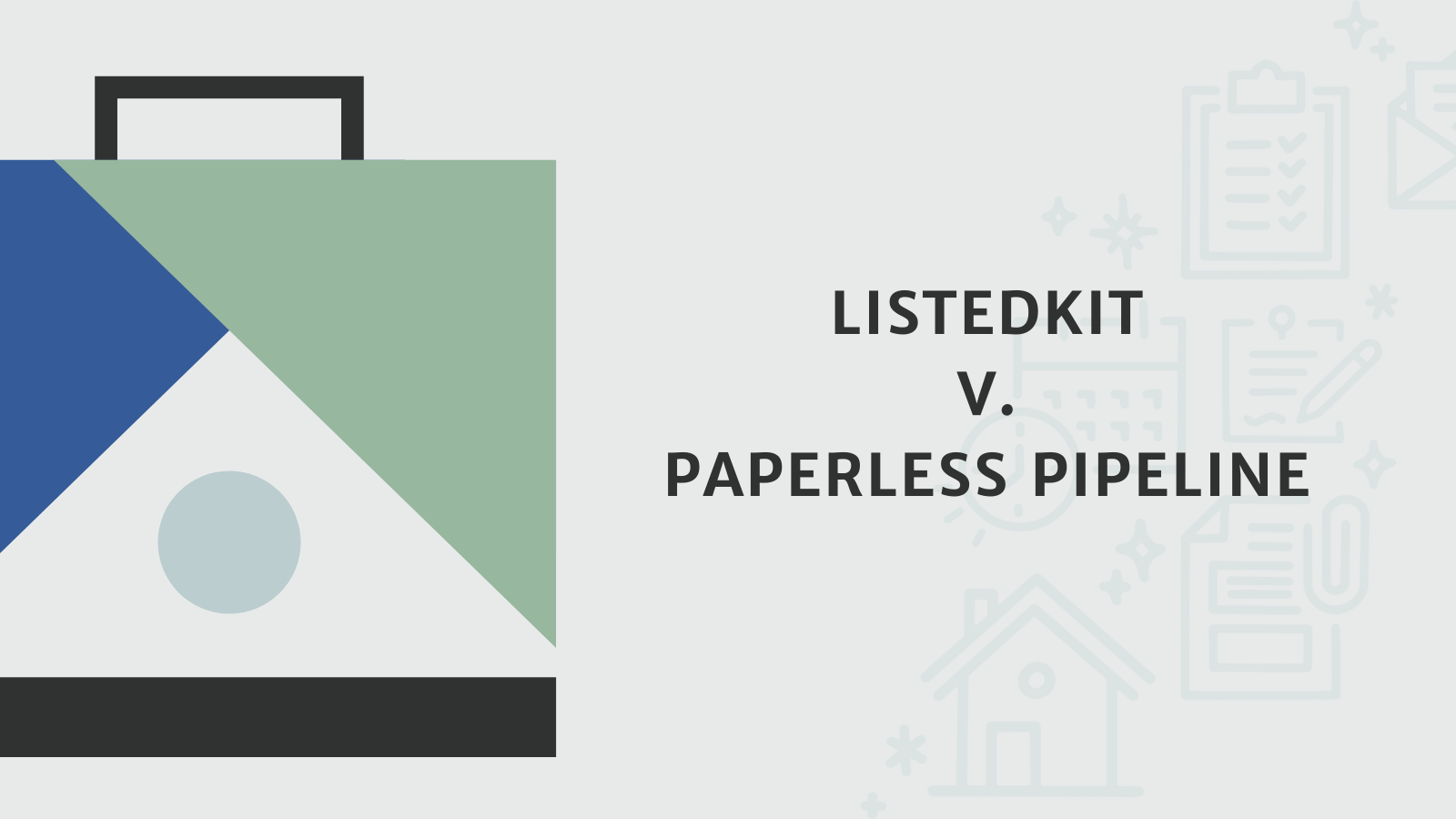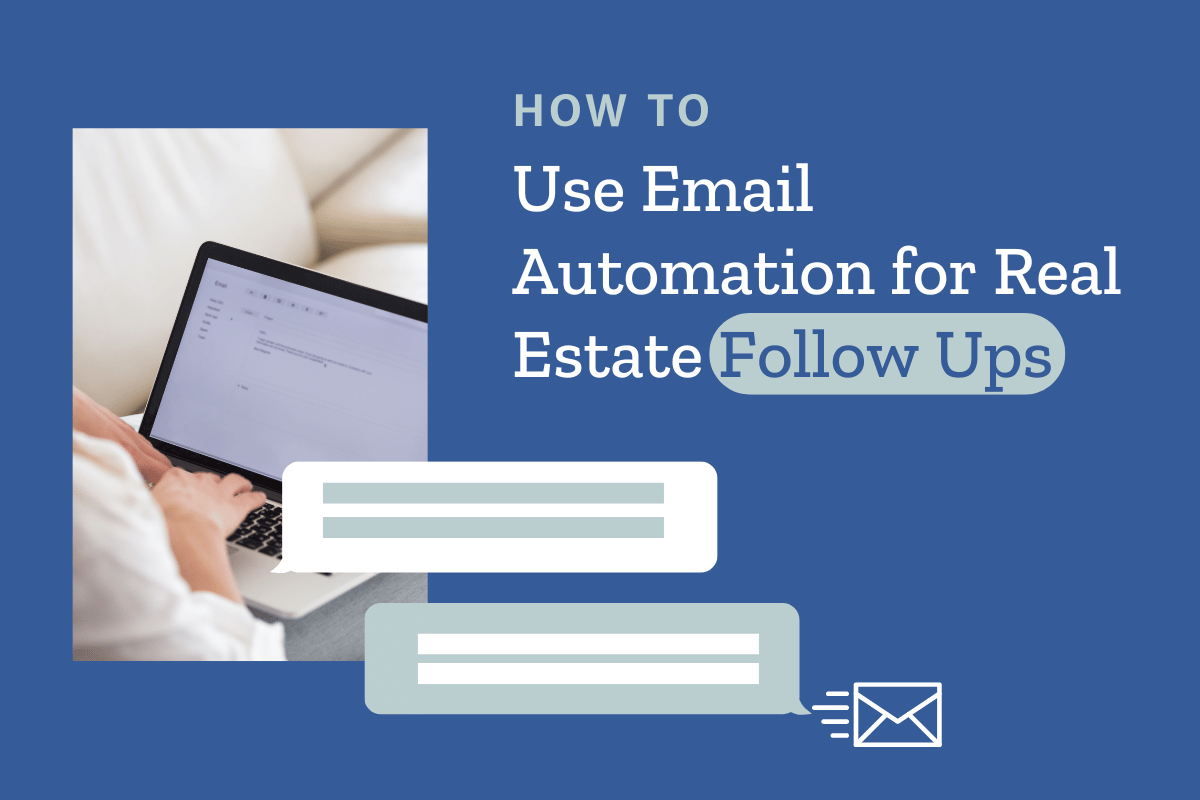
Everyone working in real estate today understands the need for help managing some of the time-consuming and intricate tasks that make up the job. The fast-paced nature of the industry creates pressure to keep multiple clients and closings on track.
In a career that leaves little margin for error, the speed at which tasks need to be completed may lead to occasional mistakes. Having a good support system or tool stack in place to alleviate your workload is beneficial, but can also be costly.
Thankfully, a new wave of real estate-focused applications has begun to emerge, with transaction management applications leading the way. These tools help agents streamline their tasks, track timelines, manage clients, and provide an exceptional client experience.
Two helpful web apps available right now are ListedKit and Paperless Pipeline. To help you out, we put together a comprehensive guide outlining the prominent features of both platforms and how they can help agents streamline their processes and improve their workload.
At a Glance: ListedKit vs. Paperless Pipeline
Both applications share similar core features but also diverge in a few areas. Below you’ll see a summary of what each platform offers for agents.
| ListedKit | Paperless Pipeline | |
| AI contract reader | Yes | No |
| Free migration services | Yes | No |
| Unlimited Transactions | Yes | No |
| Client and Agent Portals | Yes | No |
| Pricing | Starts at $49/mo | Starts at $60/mo |
As you’ll learn throughout this guide, both tools have benefits and one platform may stand out as a better option for you and your specific needs.
How Are ListedKit and Paperless Pipeline Similar?
ListedKit and Paperless Pipeline are both real estate transaction management applications. Both programs have several features that serve similar functions, including:
- Task management checklists
- Vendor and user profile database
- Document storage
In addition to the above, you’ll also notice that they each have features suited for the clients they serve. The user experience may look different, but both applications will arrive at the same end goal of a successful transaction.
How They’re Different
While ListedKit and Paperless Pipeline have several common features, they also have a few key differentiating features, including:
- AI technology
- Audit heavy
- Client and Agent Portal
- Customizable templates
- Multiple user access
- Pricing guidelines
As you continue reading, you’ll learn more about the differences between the two platforms and the types of real estate agents, transaction coordinators, and brokers that they serve best.
Difference 1: AI technology
ListedKit is the first and only real estate transaction management software to leverage the power of Artificial Intelligence (AI). This innovative technology streamlines the workflow for transaction coordinators by introducing an AI-powered contract reader.
This industry-leading feature automatically extracts crucial information from contracts, including critical dates, contact details for all parties involved, and financing specifics. This not only saves time by eliminating manual data entry, but it also assists with the review process by highlighting important details. ListedKit boasts a staggering 75% reduction in processing time for new contracts, allowing transaction coordinators to focus on higher-level tasks and deliver exceptional service to their clients.
While Paperless Pipeline offers robust transaction management tools, it currently lacks AI integration. This puts ListedKit at the forefront of innovation, empowering real estate professionals to work smarter, not harder.
Difference 2: Audit Heavy
If you’re an agent concerned about having all of your ducks in a row in the event of an audit, then Paperless Pipeline may be the route for you. With their platform, you’ll have all the necessary documents and materials in one place, stored and ready.
While ListedKit can also store all of the transaction documents you need, its overall focus is more on customer relations.
As mentioned above, Paperless Pipeline heavily emphasizes administrative assistance. To accommodate that goal, it provides a space for tracking all transactions, recording all essential documents, and backing them up monthly to a cloud-based server.
Your work will also be reviewed for compliance issues, eliminating an additional stressor that many face.
For those who find that the possibility of an audit brings anxiety to the workday, an application like Paperless Pipeline can greatly decrease that emotion and bring higher levels of security and productivity to your day.
Difference 3: Client Portal
One of the most significant differences between the two applications is the existence of a client portal in one (ListedKit) but not the other (Paperless Pipeline). While some agents may not deem this a priority, it does have its place in creating an efficient workflow and enjoyable client experience.
Before the incorporation of the Internet into real estate transactions, many agents had to gather all necessary onboarding materials and forms once they landed a new client. After doing so, they then scheduled a sit-down meeting where they would review all of the documents and complete them, step-by-step, with their new clients.
Then, clients would sign all forms, and this time-consuming chore would then be complete.
Many agents can email the appropriate documents to their clients by integrating services like DocuSign. Clients can then review and sign any relevant documents via the third-party website. However, this process still requires substantial legwork by the agent.
With a client portal in ListedKit, agents can immediately send documents to customers upon creating a new profile on their behalf. In their personalized login, they can access all the needed materials with already-dictated instructions and complete all requirements with ease.
No longer do agents have to customize each packet of materials for every client they serve. The portal eliminates this tedious task, giving much-needed time back to agents.
Difference 4: Customizable Templates
Going hand-in-hand with the client portal is the ability to create custom transaction templates for your buyers and sellers. Agents can use the standard transaction templates that come with ListedKit as a starting place and customize each to fit their needs.
Custom templates can be saved to re-use as a starting place for future clients, or they can be updated and changed on an as needed basis per unique transaction.
In the interest of time, many agents follow the same workflow for each client. However, customizable templates allow you to tailor task management and timelines to each transaction for a more organized and personalized client experience.
You can also use the pipeline view in ListedKit templates to keep upcoming tasks and deadlines top of mind. The templates also include automated reminders, checklists, and milestone completion notifications.
Difference 5: Multiple User Access
Many agents look to using a transaction management tool to alleviate the strain from a high volume of work and little assistance or minimal budget for support. However, it’s essential to remember that your current position isn’t necessarily the same as what you will have in the future.
What’s to say that a few years from now (with more time for productivity due to management apps), you won’t have the budget for support staff or a team?
Keeping this in mind, you may want to consider choosing a platform that allows multiple users to access your database and information. Therefore, if you were to add an administrative assistant to your staff later on, you will have the seamless ability to add them to the application and access all of your client information.
Another consideration to think about is those who work in real estate corporations. If you have multiple agents in your brokerage, it might be worth it for everyone to utilize the application. Instead of purchasing it separately, you can choose a tool that allows all potential users to have their own account for easy access.
While ListedKit does not offer this functionality, Paperless Pipeline does. As one of the primary differences between the two platforms, you will see that one option has a customer-centric, individualized scope (ListedKit), and the other has an admin-focused, corporate take on management tools (Paperless Pipeline).
Difference 6: Pricing Guidelines
When considering which application to utilize, it’s necessary to look into how fees are charged. While both ListedKit and Paperless Pipeline offer complimentary trials to test their services out, what follows is different.
ListedKit allows you to add all your customer information and company documents for free. Once you begin your first closing transaction, you move into the paid version of the tool. With this upper tier, you are charged a low monthly fee and have unlimited access to future closing transactions and clients.
However, Paperless Pipeline operates a bit differently. Instead of a monthly fee, you are charged based on the number of monthly transactions you manage. After you complete the free trial, you will select a package that corresponds best with the amount of transactions you intend to complete each month.
If you surpass the amount you chose, you are bumped up to the next tier. For those operating with multiple users and a high volume of transactions, it’s best to seek out the unlimited option that the company offers.
Things To Consider
When you search for a proper real estate transaction management application, you’ll want to take several things under consideration. While all platforms are unique in their own way, there are elements among them that are similar in nature.
- Budget – As we mentioned previously, different companies operate under various fee structures. Whereas some will charge a flat monthly fee, others will come with an annual rate. Some, like Paperless Pipeline, will charge based on the number of transactions. It’s best to select an option that works well with your budget and finances.
- Ease of Use – An application is useless if you are unable to use it in a manner that is conducive to your workflow. If the layout is too complex or requires several steps to complete a simple task, it’s likely not a good fit for your needs.
- Workload Conducive – While many applications say they can simplify a large workload and make things more automated and seamless, this isn’t always the case. As we see with ListedKit vs. Paperless Pipeline, two real estate applications that assist agents, how they offer this assistance is very different.
- Features – In regards to the last point, it’s imperative to choose which features are most meaningful to you and the work that you do. If there are certain areas in which you need more support, it’s best to focus on platforms that will aid you in that particular area.
- Customer Support – At times, applications can run into snags. These issues can be especially aggravating when you are in the middle of a timely transaction. Having access to customer support when you need it most is critical.
In the end, it’s important to think through your needs and pain points before settling on a tool. You want to avoid getting caught in a subscription that doesn’t solve your problems, which can happen if you don’t correctly identify what you need and research your options beforehand.
Conclusion
Real estate agents are constantly on the go. Whether it’s procuring new clients, showing homes, representing buyers and sellers, or marketing their business, they are always fulfilling a variety of tasks. However, finding knowledgeable andand budget-friendly support for these duties isn’t always feasible.
Because of this, and due to the rise of mobile applications, many agents are turning to real estate transaction management platforms. These tools assist those in the real estate world in organizing their documents, preparing for what’s to come, and performing compliance checks.
If this sounds like the challenges you face, don’t hesitate to explore what these apps can do for you. Start with a free trial of ListedKit to see the difference it can make for your transactions and clients.



